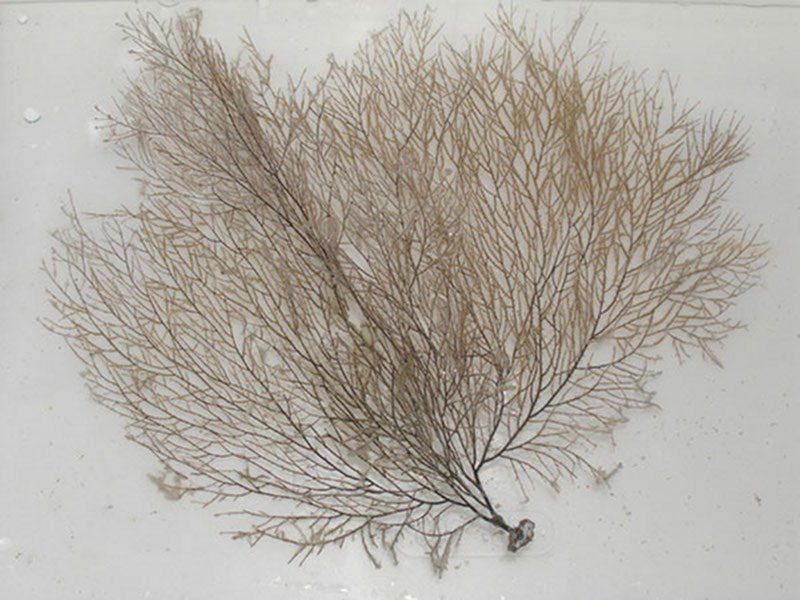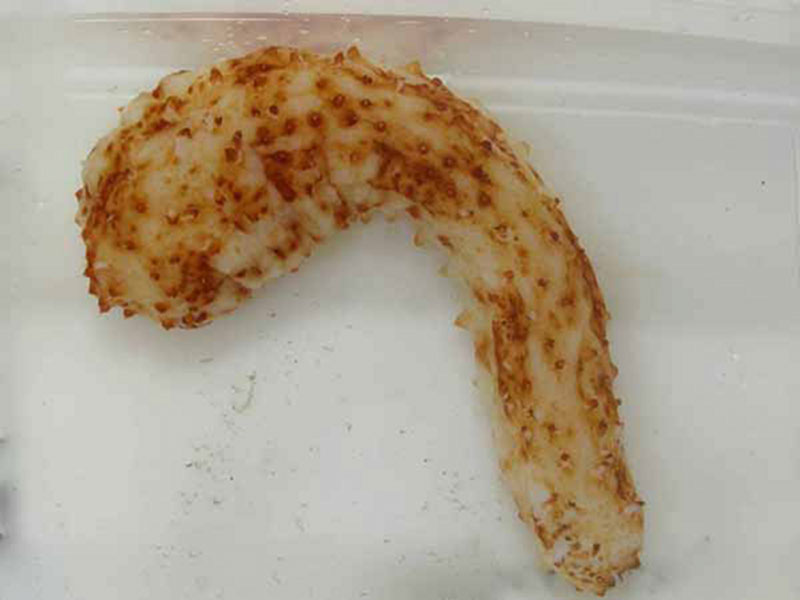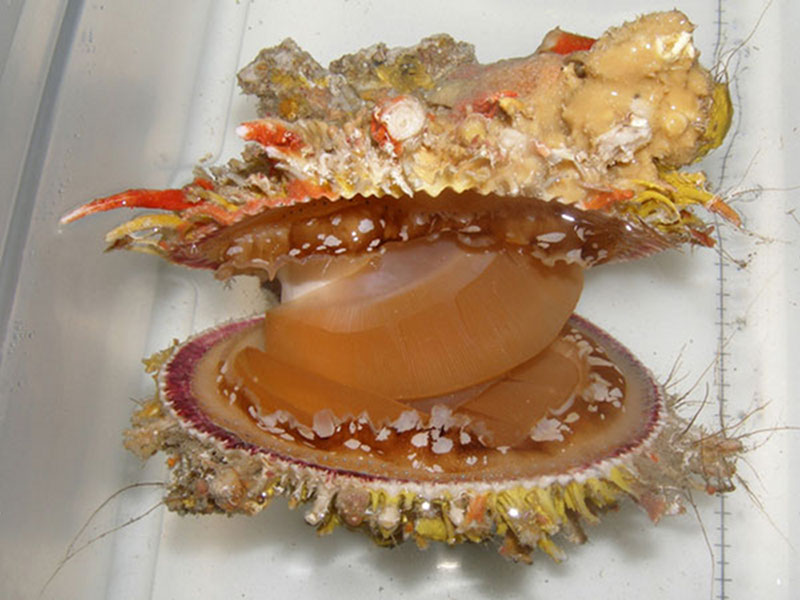
By Robbie Smith, Curator - Bermuda Natural History Museum
June 27, 2011
The Iliffe dive team has returned a remarkable and unique collection of animals from Bermuda’s deep reefs that will significantly expand the collection at the Bermuda Natural History Museum. At least two new cup corals were collected along with five rare specimens of the deep water antipatharians (or black corals) and deep water gorgonians. These are the more obvious larger marine organisms, in addition to a large orange and white holothurian (a sea cucumber), and a large Thorny Oyster, Spondylus ictericus, collected at the North Rock Cave site. The associated reef fishes seen in photographs or video have not been evaluated as yet.

Button cup coral sample from North Rock Cave at 200 ft depth. Image courtesy of Bermuda Deep Water Caves 2011, NOAA-OER. Photo taken by Robbie Smith. Download image (jpg, 47 KB).
The greatest diversity of marine life is found among the smaller encrusting organisms growing on or in the rock material retrieved. At least five sponges, four bryozoans, three bivalves, two hermit crabs and six species of fleshy algae and three species of crustose coralline algae have been distinguished so far. Finding fleshy algae at 448 feet at Challenger Bank sets a new Bermuda record! A previous NOAA project sampled the Bermuda Seamount and the top of Challenger Bank in 1983 and 1985.

Black coral from North Rock Cave at 200 ft depth. Image courtesy of Bermuda Deep Water Caves 2011, NOAA-OER. Photo taken by Robbie Smith. Download image (jpg, 0 KB).
The collected rock material is left in static water for 2 days and the declining oxygen content of the water evacuates all the animals who were hiding in the honey-comb interior of the these old and heavily eroded rocks. I am sure I have at least 30 species of polychaete worms, three types of sipunculids, three nemerteans and several crustaceans (shrimps, crabs, amphipods, tanaeids). In the current sample from the fossil reef at 200 feet on the South Shore, I found at least 3 tunicates, a class of animals I had not encountered yet!

Holothurian or Sea Cucumber collected from North Rock Cave at 200 ft depth. Image courtesy of Bermuda Deep Water Caves 2011, NOAA-OER. Photo taken by Robbie Smith. Download image (jpg, 0 KB).

Spondylus or spiny oyster (bivalve) from North Rock Cave at 200 ft depth. Image courtesy of Bermuda Deep Water Caves 2011, NOAA-OER. Photo taken by Robbie Smith. Download image (jpg, 0 KB).
I still have two more sample lots to process but I can foresee a solid year’s work ahead of me, to identify and catalog the incredibly rich biological diversity that has inhabits Bermuda’s extensive seamount.